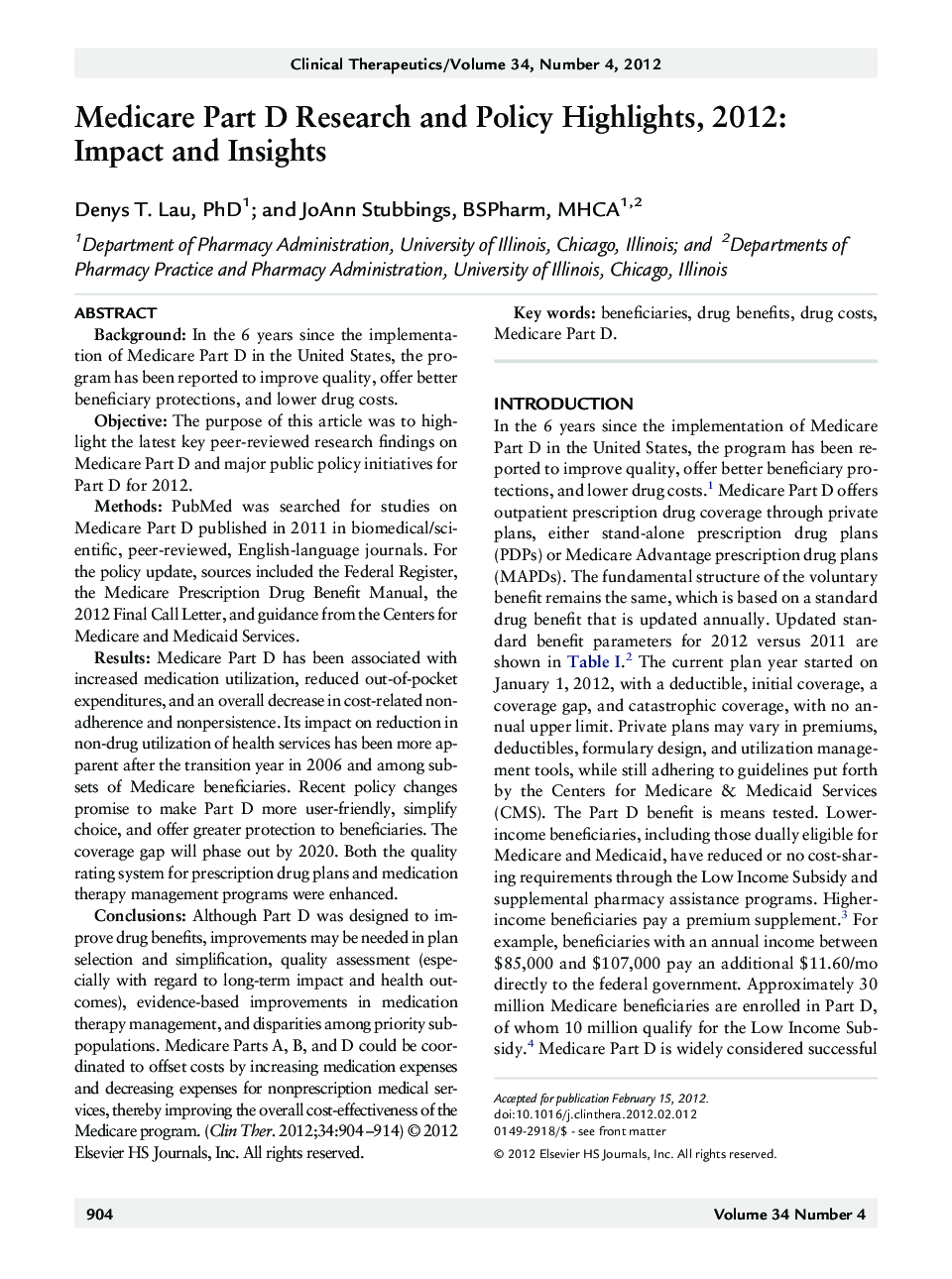| کد مقاله | کد نشریه | سال انتشار | مقاله انگلیسی | نسخه تمام متن |
|---|---|---|---|---|
| 2527521 | 1119923 | 2012 | 11 صفحه PDF | دانلود رایگان |

BackgroundIn the 6 years since the implementation of Medicare Part D in the United States, the program has been reported to improve quality, offer better beneficiary protections, and lower drug costs.ObjectiveThe purpose of this article was to highlight the latest key peer-reviewed research findings on Medicare Part D and major public policy initiatives for Part D for 2012.MethodsPubMed was searched for studies on Medicare Part D published in 2011 in biomedical/scientific, peer-reviewed, English-language journals. For the policy update, sources included the Federal Register, the Medicare Prescription Drug Benefit Manual, the 2012 Final Call Letter, and guidance from the Centers for Medicare and Medicaid Services.ResultsMedicare Part D has been associated with increased medication utilization, reduced out-of-pocket expenditures, and an overall decrease in cost-related non-adherence and nonpersistence. Its impact on reduction in non-drug utilization of health services has been more apparent after the transition year in 2006 and among subsets of Medicare beneficiaries. Recent policy changes promise to make Part D more user-friendly, simplify choice, and offer greater protection to beneficiaries. The coverage gap will phase out by 2020. Both the quality rating system for prescription drug plans and medication therapy management programs were enhanced.ConclusionsAlthough Part D was designed to improve drug benefits, improvements may be needed in plan selection and simplification, quality assessment (especially with regard to long-term impact and health outcomes), evidence-based improvements in medication therapy management, and disparities among priority subpopulations. Medicare Parts A, B, and D could be coordinated to offset costs by increasing medication expenses and decreasing expenses for nonprescription medical services, thereby improving the overall cost-effectiveness of the Medicare program.
Journal: Clinical Therapeutics - Volume 34, Issue 4, April 2012, Pages 904–914